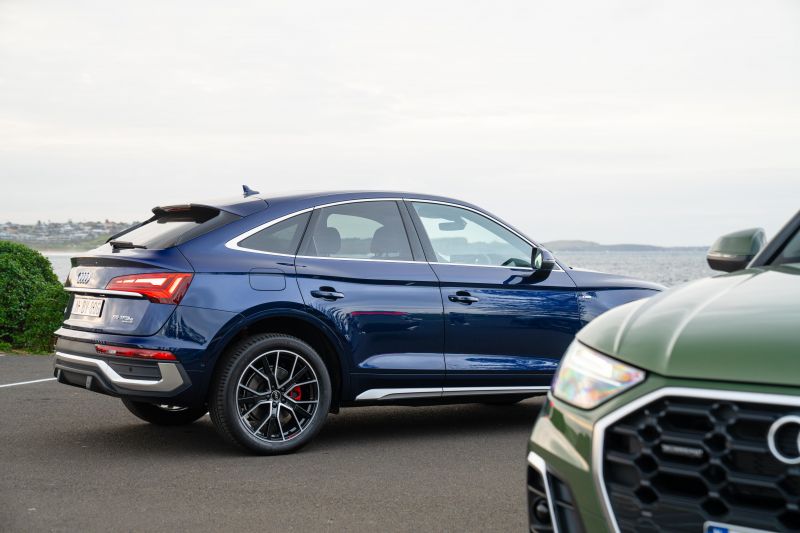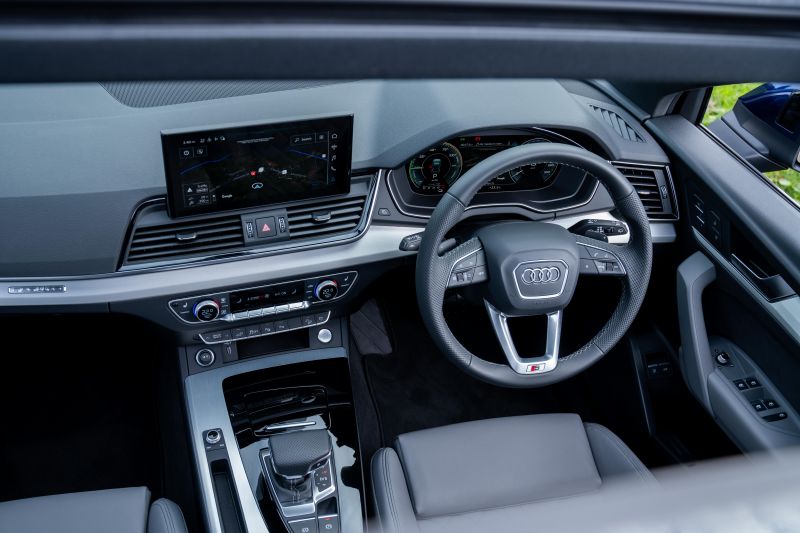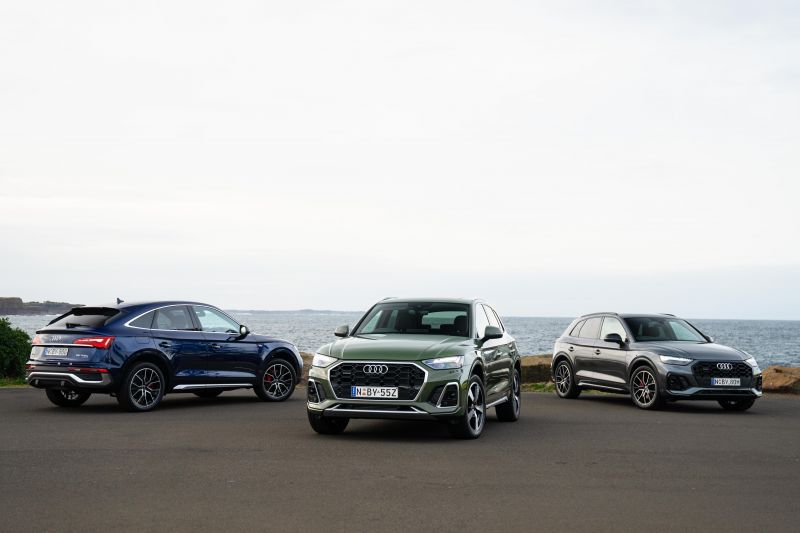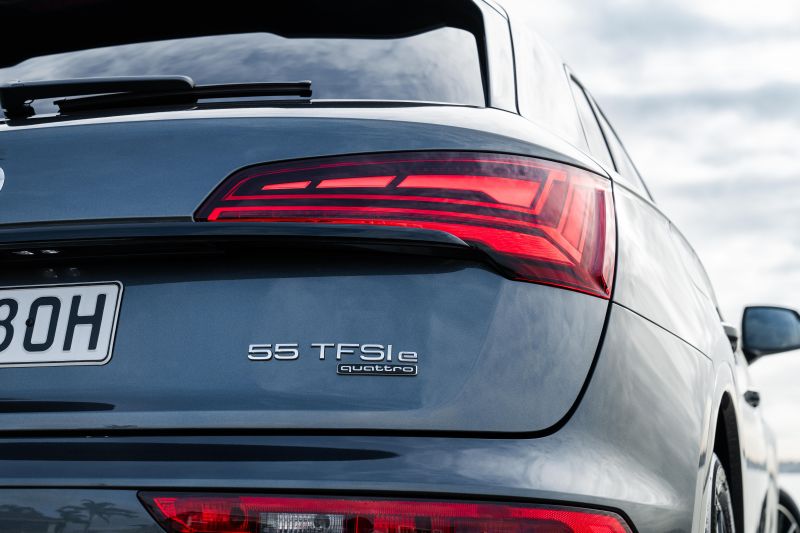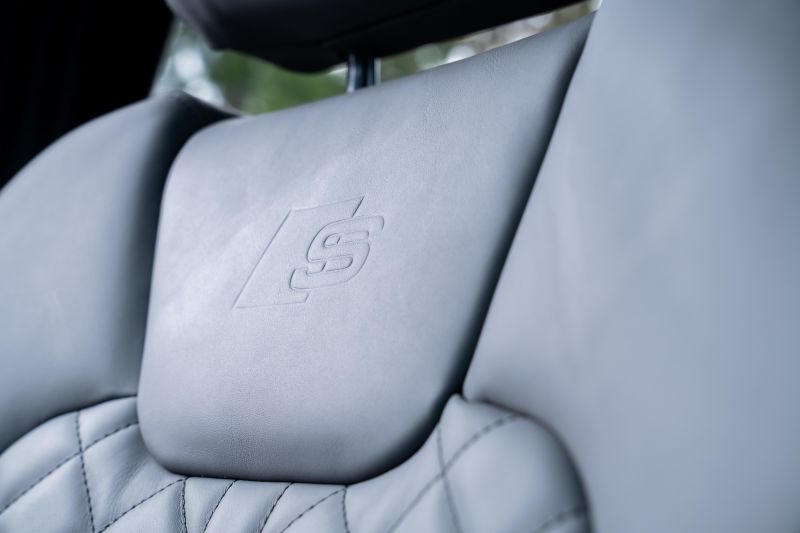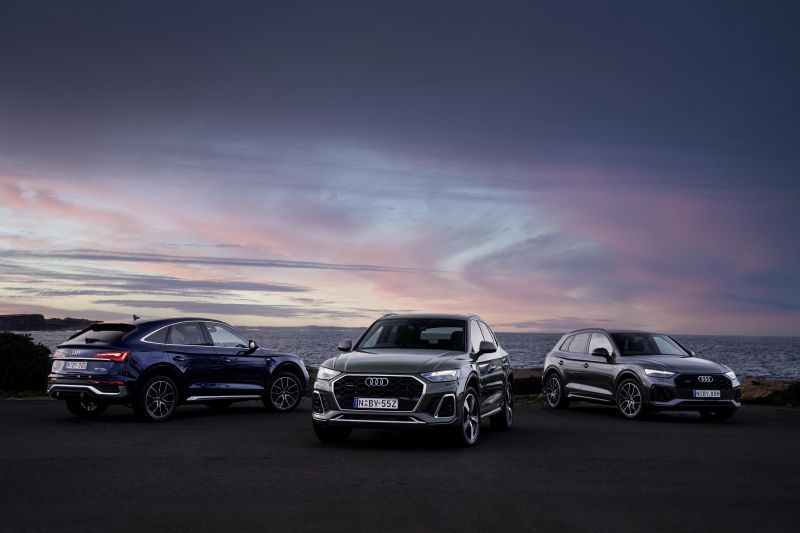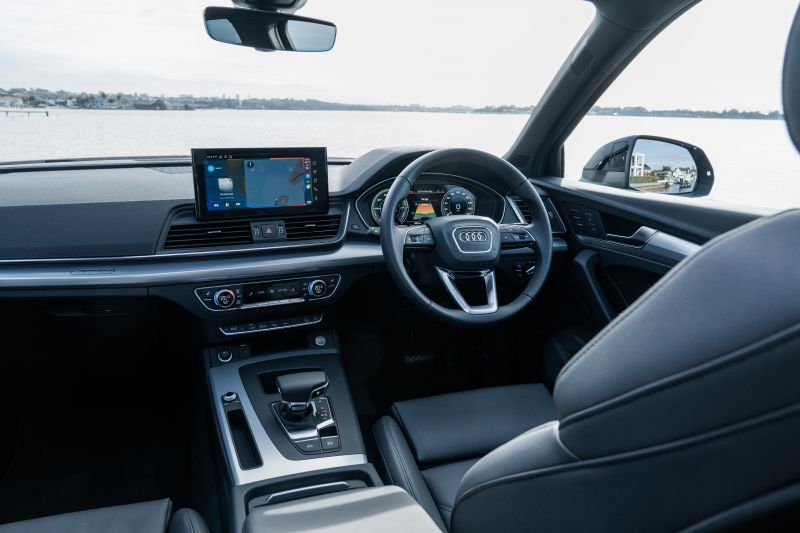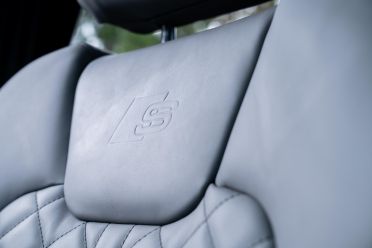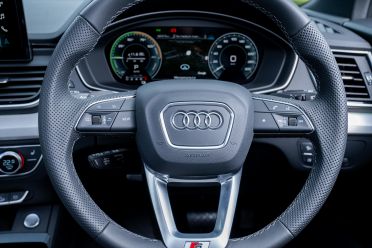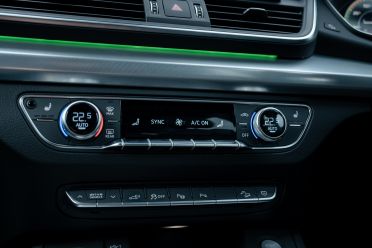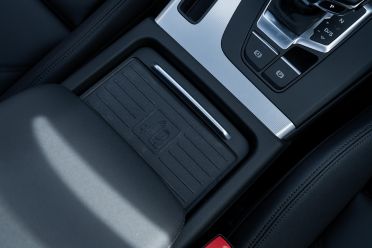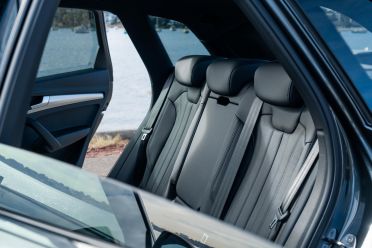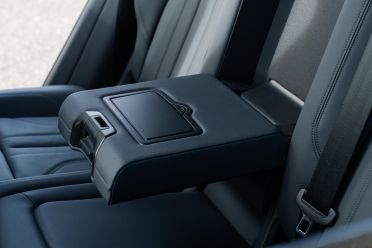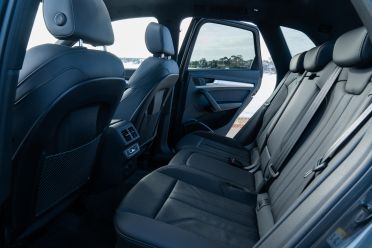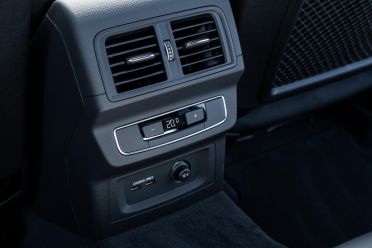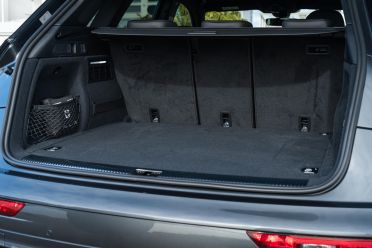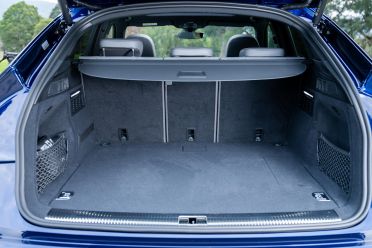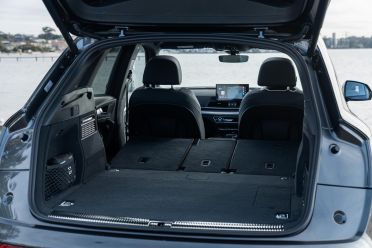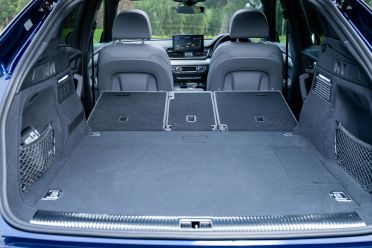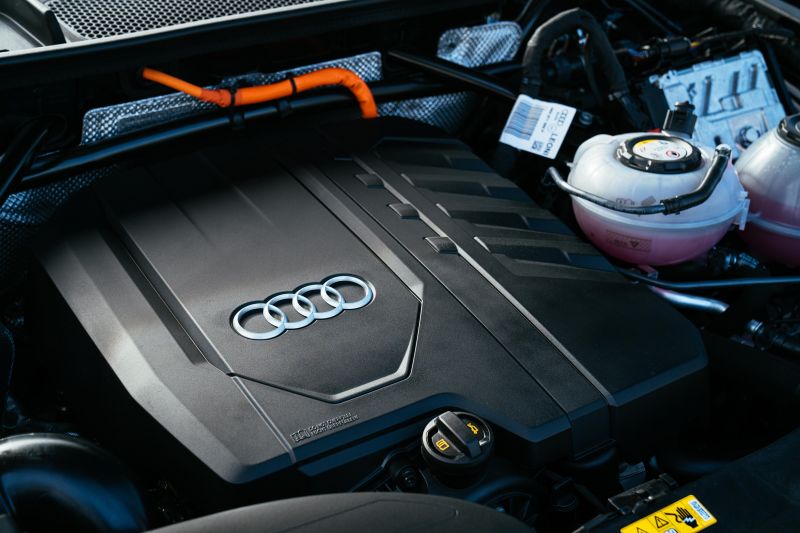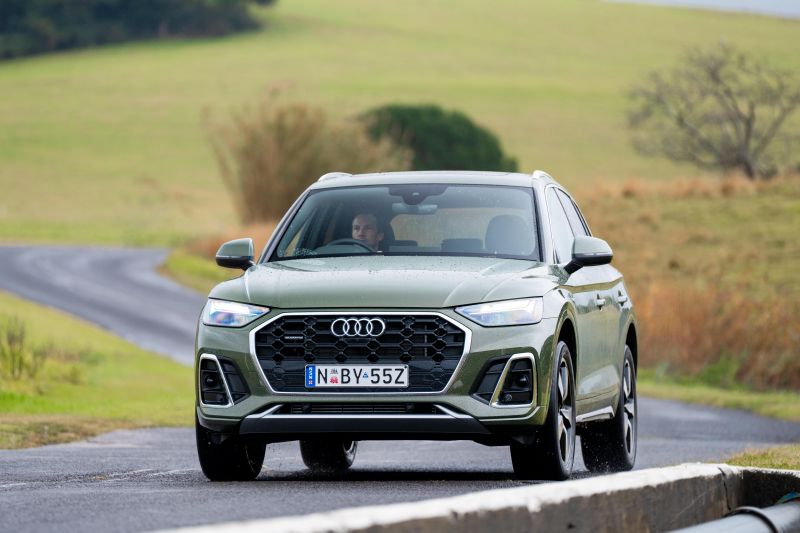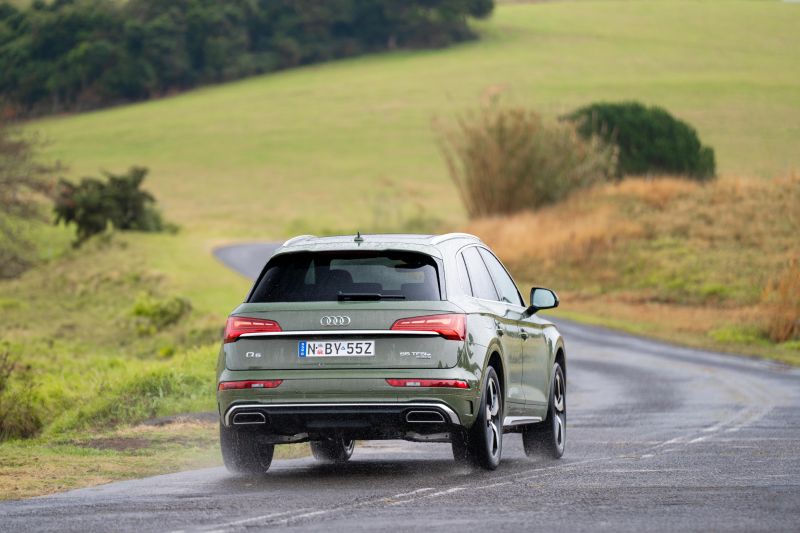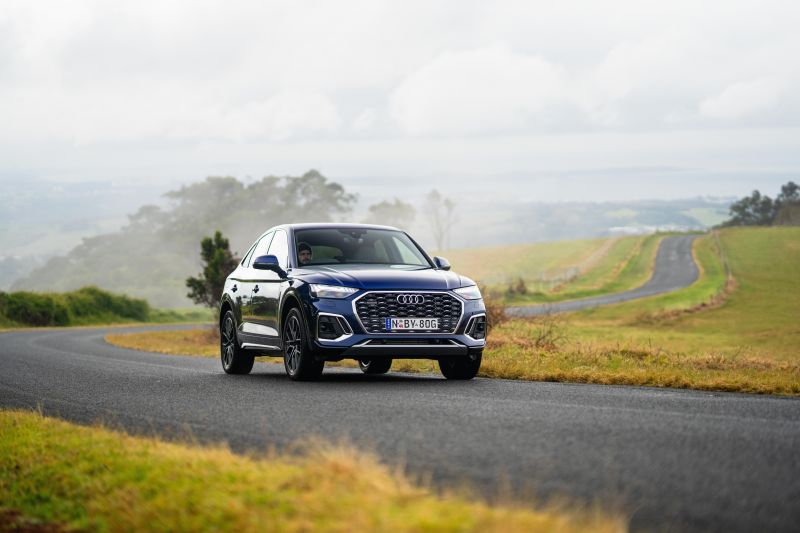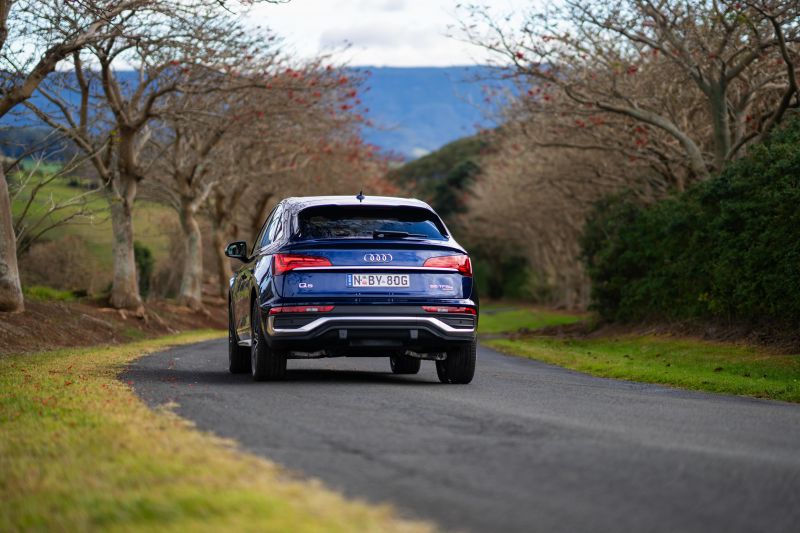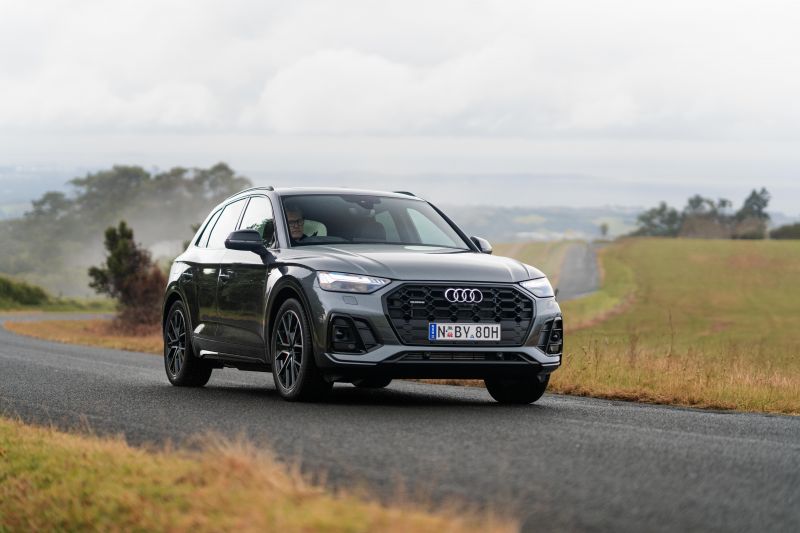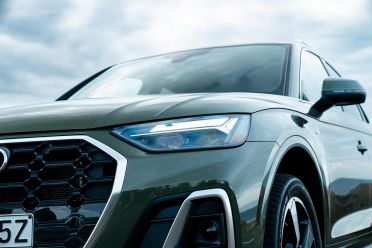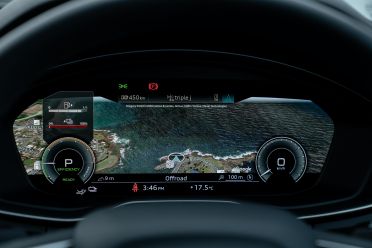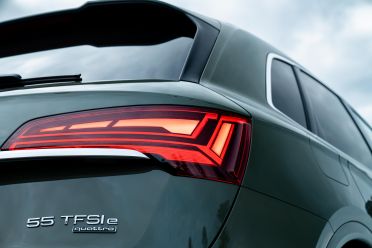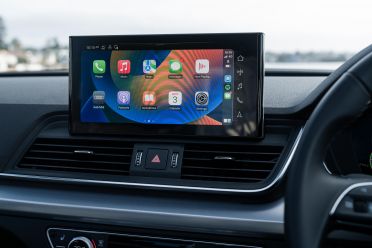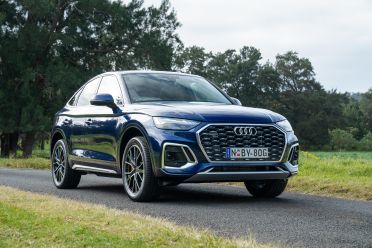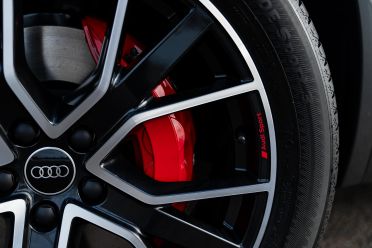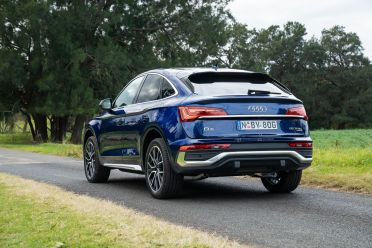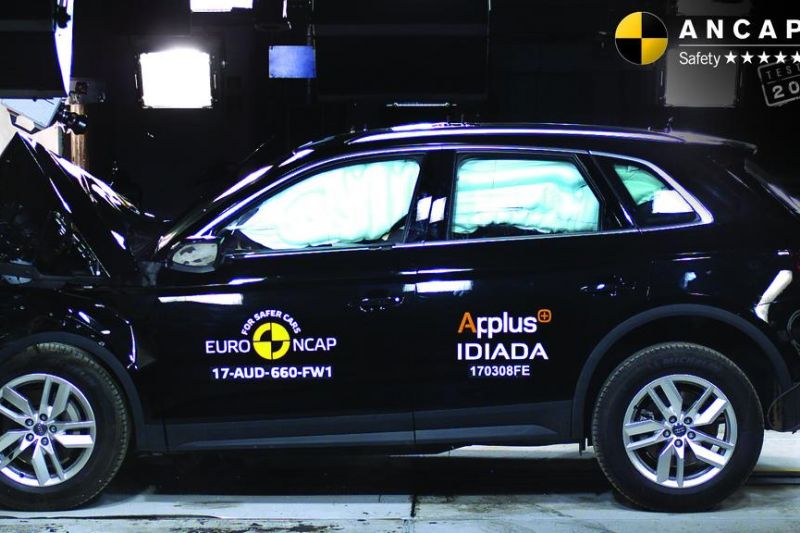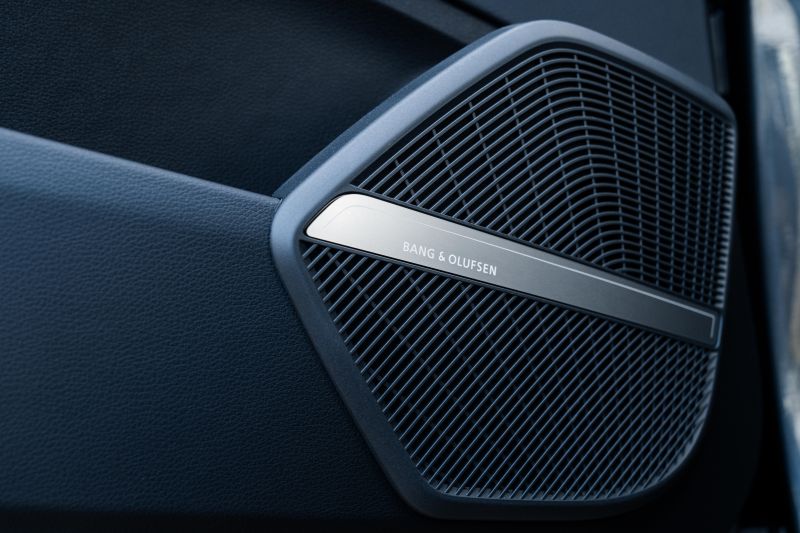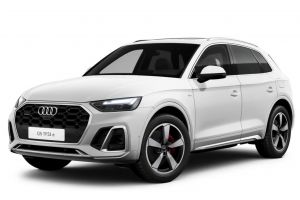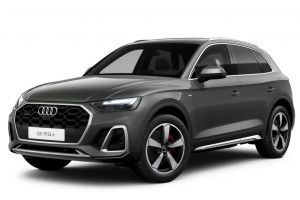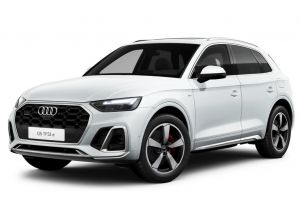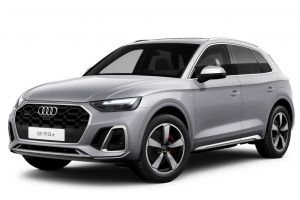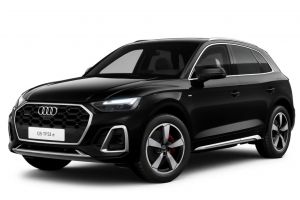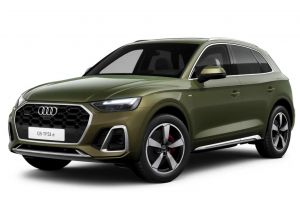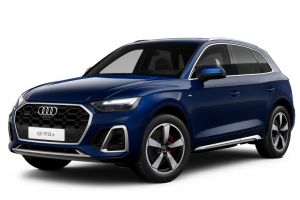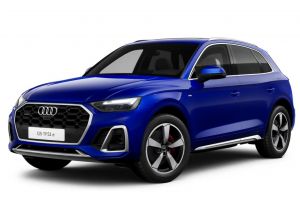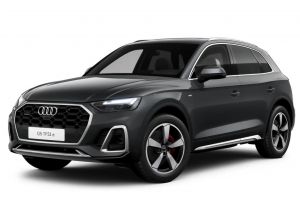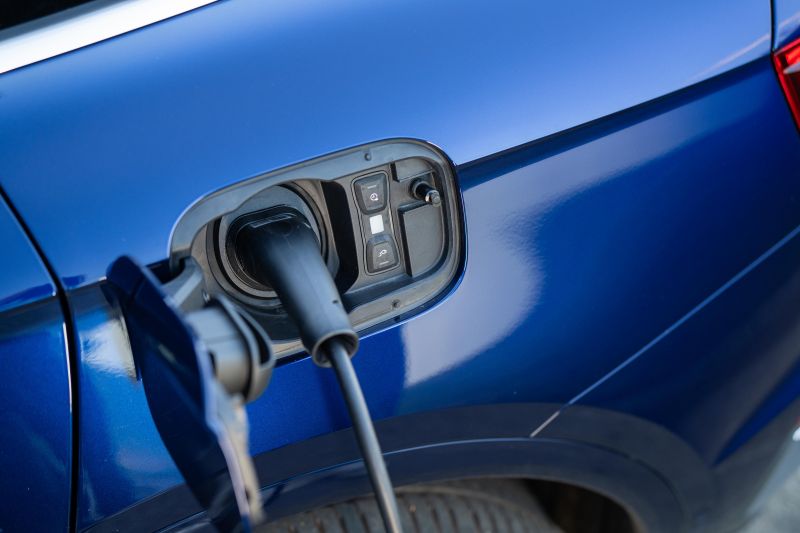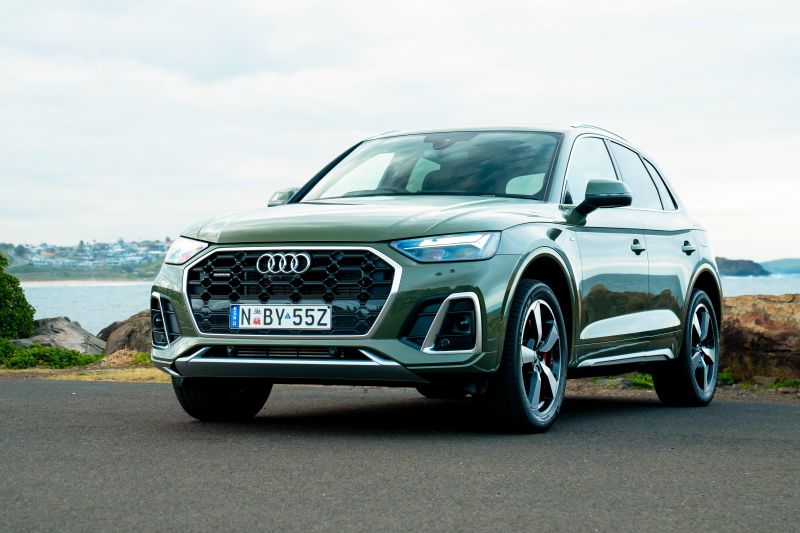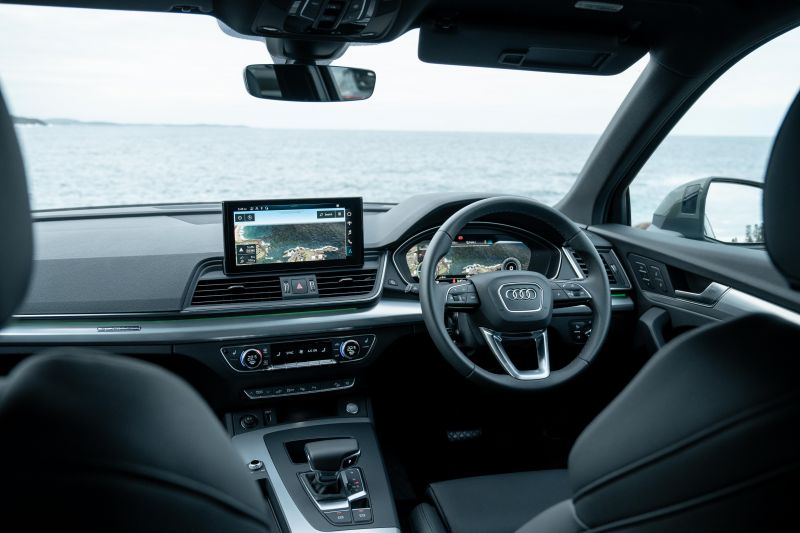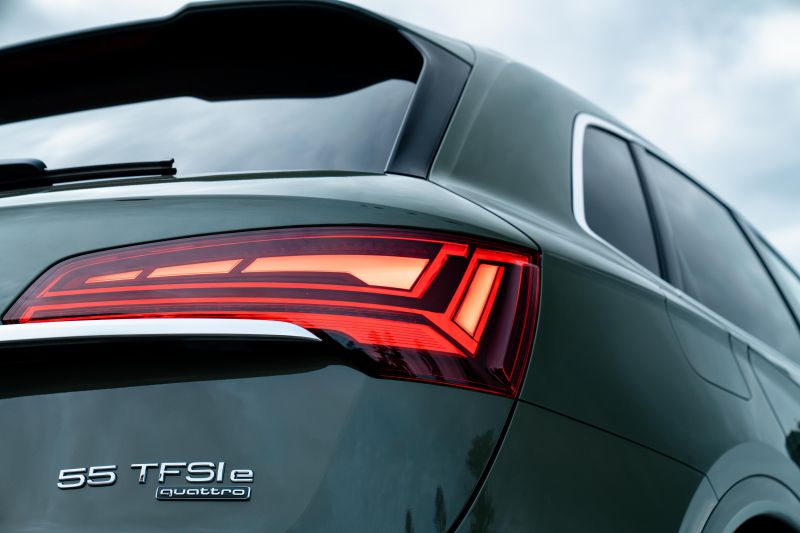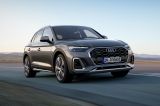‘Hybrid’ and ‘electric’ are the buzzwords of the industry at the moment – ‘plug-in hybrid’ not so much.
Most European brands play in a field that incentivises the extended electric range of PHEVs to drive down official emissions figures and avoid hefty fines, and have skipped Toyota-style hybrids.
The lack of a formal emissions policy in Australia has meant they’re are constantly at war with head office to get the latest, most efficient powertrains Down Under – including mild-hybrid, plug-in hybrid and battery electric – as their finite production is prioritised for markets like Europe and North America where manufacturers are penalised for not meeting fleet targets.
German luxury marque Audi is entering its first hybrid in the premium mid-sized SUV segment in Australia in the form of the 2023 Audi Q5 55 TFSI e quattro.
The concept of a hybrid Q5 isn’t new. In 2011 the company released a limited run of Q5 hybrids based on the previous-generation SUV, featuring an EA888 2.0 TFSI turbo petrol engine hooked up to an electric motor and small nickel-metal hydride battery – not too dissimilar in concept to a Toyota RAV4 Hybrid.
Audi debuted the Q5 55 TFSI e back in 2019 with the pre-facelift second-generation Q5. Australia is a little late to the party.
Audi has toyed with PHEVs in the past and withdrawn due to low demand, with the 2015 Audi A3 e-tron and 2017 Audi Q7 e-tron plug-in hybrids both having short production runs Down Under.
But with increased demand for hybrids and electric vehicles in Australia, and a recent change in government putting a renewed focus on cleaning up our vehicle fleet, Audi is keen as ever to bring electrified offerings Down Under.
This new electrified Q5 will take on the BMW X3 xDrive30e, Range Rover Evoque P300e and Volvo XC60 T8 Recharge plug-in hybrids in Australia, and you can throw in the more affordable Lexus NX 450h+ and Mazda CX-60 P50e PHEVs as well.
Does Audi’s take on the technology make a case for itself?
How much does the Audi Q5 55 TFSI e cost?
The Audi Q5 55 TFSI e is available in both SUV and Sportback body styles in Australia, priced from $102,900 and $110,200 before on-road costs respectively.
In SUV guise the plug-in hybrid represents a $20,100 premium over the 45 TFSI quattro Sport, while the Sportback TFSI e is $18,200 dearer than its 45 TFSI quattro S line equivalent.
While the Q5 PHEV uses the same 2.0-litre turbo petrol engine as the 45 TFSI under the bonnet, the addition of the electric motor and lithium-ion battery bring performance and efficiency gains, at least on paper.
The 55 TFSI e is actually the most powerful Q5 ever, quoting a system output of 270kW which eclipses the SQ5 TDI’s 251kW. The PHEV’s 500Nm of system torque is down a bit on the monstrous 700Nm of the diesel SQ5, and the added weight of the hybrid driveline means the PHEV is 0.2s off the pace in the dash to 100km/h (5.3s v 5.1s).
BMW’s X3 xDrive30e lists for $111,800 plus on-road costs, and comes with less grunt (215kW/420Nm) and driving range (41-50km). The Volvo XC60 Ultimate T8 Recharge lines up well with the Audi, priced from $101,990 and offering a beefier 340kW/709Nm PHEV system which is 0.5s quicker to 100km/h. It also offers more range (up to 81km).
The Lexus NX 450h+ F Sport is closer in size to the Q5 relative to the BMW and Volvo, and at $90,948 plus on-roads is significantly more affordable. It offers better range, with up to 87km, but lengthy wait times plague Lexus right now.
Finally, Mazda has recently entered the premium mid-size SUV space with its all-new CX-60, which also offers the brand’s first-ever plug-in hybrid drivetrain – priced between $72,300 and $85,500 depending on grade.
With 241kW and 500Nm from its naturally-aspirated 2.5-litre PHEV system, the CX-60 e-Skyactiv PHEV is within reach of the Q5 TFSI e’s straight line performance (0-100 in 5.9s) and offers more electric range (up to 76km).
The Q5 Sportback TFSI e has little competition, given BMW doesn’t offer an X4 PHEV in Australia and Mercedes-Benz doesn’t offer plug-in hybrid versions of the new GLC or GLC Coupe in Australia.
You could also make the case for all-electric SUVs at this price point. The Tesla Model Y Performance ($92,020) and BMW iX3 ($104,900) are both playing in a similar price bracket.
2023 Audi Q5 pricing:
Audi Q5
- Q5 35 TDI: $67,900
- Q5 40 TDI quattro: $75,500
- Q5 45 TFSI quattro: $75,800
- Q5 40 TDI quattro Sport: $81,500
- Q5 45 TFSI quattro Sport: $82,800
- Q5 55 TFSI e quattro S line: $102,900
- SQ5 TDI quattro: $112,200
Audi Q5 Sportback
- Q5 Sportback 40 TDI quattro S line: $83,400
- Q5 Sportback 45 TFSI quattro S line: $92,000
- Q5 Sportback 55 TFSI e quattro S line: $110,200
- SQ5 Sportback TDI quattro: $118,000
Prices exclude on-road costs
What is the Audi Q5 55 TFSI e like on the inside?
The interior is standard Q5 fare, if with a higher level of specification out of the box.
Overall the layout and details are largely the same as something like a Q5 Sport, but there are some extra buttons and menus at play here thanks to the plug-in hybrid drivetrain.
You’ll notice right away when you hop in that the 12.3-inch Audi virtual cockpit display is showing a hybrid power meter rather than the usual tachometer. You get a rev counter in the bottom left-hand corner if you look closely.
The trip computer menu also has extra graphics for EV range – shown as part of the overall driving range, a helpful insight into the total range of the vehicle even beyond electric driving.
You’ll also find an EV button next to the Audi drive select mode button, which toggles through the various hybrid drivetrain settings: Hybrid, Hold, Charge and EV. Additionally, there’s Auto, Comfort, Dynamic and Individual modes in the Audi drive select system.
The Q5 TFSI e SUV comes with Audi’s regular leather-appointed Sport front seats, while the Sportback upgrades to the S line interior package with buttery smooth fine Nappa leather with contrast stitching in diamond pattern – just like an SQ5.
Opting for the Q5 Sportback PHEV also brings brushed aluminium inlays and a perforated leather steering wheel with S badging, which certainly elevates the ambience over its SUV sibling. It’s a shame you can’t get this interior package as a standard option with the Q5 SUV.
As with the wider Q5 and SQ5 family, the cabin is trimmed and upholstered to a high standard, if a little austere in black and grey and with some cheaper plastics on the lower portions of the dashboard.
The Audi Q5 continues to be built at the Puebla facility in Mexico, which is also the site for Volkswagen Tiguan Allspace production. Whether that matters is a personal preference, but it’s not like things aren’t screwed together the way you think they should in an Audi – I’d just like some nicer materials, please.
Unlike newer Audis, the Q5 retains a more conventional climate control setup with physical rotary dials and buttons to toggle various settings, though the TT-inspired digital displays within the dials are a nice touch.
There’s a clicky action to the knurled and silver-outlined switchgear that has a satisfying feel. Bentley tends to offer a similar experience, if with a bit more grandeur.
Storage is a bit of a weak point up front for the Q5. There are big bottle holders in the doors, but the slots ahead of and next to the shifter are quite small. The wireless phone charger is a sliding pad that either covers the cupholders or eats into your front-centre armrest storage, too.
You can option the Q5 with climate-controlled cupholders should you wish to keep coffees warm or chilled beverages cold. In both body styles, these will set you back $390.
Overall comfort is solid, with good adjustment in the electric seats and manually-operated steering column. You can add electric steering column adjustment with memory for $950, though it really should be standard on a top-spec Audi starting at over $100,000 before on-road costs.
Despite being one of the more compact vehicles in its segment, the Q5 offers ample room for adults sitting behind adults – more that can be said for the related Porsche Macan.
At 6’1 I had decent room behind my preferred driving position, with good head and shoulder room, as well as toe room. Leg and knee room are more on the snug side, but I wasn’t pressing up against the seat back, which has cutouts for knobbly knees.
This makes a great four-person car for families with older kids, for example, though you can squeeze five at a pinch. That big transmission tunnel eats into middle passenger space, however.
Rear amenities include a third zone of climate controls with directional air vents, a pair of USB-C charge ports and a 12V outlet, as well as netted map pockets, large bottle holders and a chunky fold-down centre armrest with cupholders.
Parents of younger children also have access to ISOFIX anchors on the outboard seats in addition to top-tethers across the backs of all three positions.
Due to the battery pack being under the rear floor, the Q5 TFSI e has slightly less boot capacity than its combustion-engined counterparts.
The Q5 55 TFSI e SUV quotes 460-1400L, while the Sportback lists 380L-1360. By comparison, the standard Audi Q5 SUV offers 520-1520L, while the Sportback quotes 510L in local spec – there’s no figure for when the rear seats are folded.
Helpful boot features include remote release levers for the rear seat backs, as well as netted storage areas on either side. There are hooks for netting and shopping bags, too.
What’s under the bonnet?
The Audi Q5 55 TFSI e features a 195kW/370Nm 2.0 petrol engine and 105kW/350Nm electric motor, hooked up to a 14.4kWh (net) lithium-ion battery pack mounted under the boot floor.
System power and torque are listed at 270kW and 500Nm respectively, making the 55 TFSI e the most powerful production Audi Q5 to date – even more power than the SQ5.
Drive is sent to Audi’s quattro all-wheel drive system, which can decouple the rear axle under low load for enhanced efficiency. Unlike some other adaptive AWD systems, Audi’s quattro ultra tech defaults to all-wheel drive and will only disconnect the rear axle when it’s not needed.
The electric motor is mounted between the 2.0 TFSI petrol engine and the seven-speed S tronic dual-clutch transmission, with the PHEV system effectively extending on the Q5 45 TFSI with the same 2.0 TFSI powertrain.
Zero to 100km/h takes a claimed 5.3 seconds in the Q5 PHEV, just 0.2s off the claim of the SQ5 TDI (5.1s). Combined fuel efficiency is listed at 2.0 litres per 100km, based on starting with a charged battery. Energy efficiency is rated at 23.9kWh/100km – well up on most newer EVs.
The Q5 TFSI e’s 14.4kWh lithium battery is compatible with up to 7.2kW AC charging via its Type 2 charge port, allowing for the energy storage to be fully recharged in around 2.5 hours at the maximum charge rate, or in 8.0 hours using a 2.3kW domestic wall plug. WLTP electric range is rated at up to 55 kilometres (53km Sportback), with electric mode available at speeds up to 135km/h.
How does the Audi Q5 55 TFSI e drive?
The Volkswagen Group’s plug-in hybrid systems are some of the smoothest and most refined out there, and the Q5 is no different.
On its own the petrol engine is already a peach, doing service in everything from Golf hot hatches to the Audi Q5 45 TFSI and entry-level Porsche Macan. It’s a powertrain that really can do it all, and adapts to each application well.
Hook it up to a plug-in hybrid system, and its capability is enhanced even further. With a full battery you’ll spend most of your time in EV mode, but when the engine is called upon you barely hear or feel it firing to life.
It seamlessly shuffles between power sources when required, with little to no vibration or kickback from the engine. The seven-speed S tronic is also one of the best of the dual-clutch breed, snapping through ratios quickly and imperceptibly – at low speeds, the electric assistance rids you of any low-speed hesitation.
In normal driving the plug-in Q5 is a smooth operator. The 105kW/350Nm e-motor is almost as powerful as the entry-level Q5 35 TDI diesel (120kW/370Nm), albeit carrying significantly more weight (2150kg v 1815kg), but unlike some PHEVs with piddly electric motors, the Q5 PHEV can be driven up to highway speeds without feeling laboured.
Punch the throttle pedal and all systems come online together – it may take a moment to fire up the engine and get into gear if the drivetrain is in EV mode – but once rolling the 55 TFSI e feels suitably muscular if you need to make a quick overtake or gun it from the lights.
The 5.3-second 0-100 time feels entirely achievable, and Audi’s team told us the drivetrain keeps battery charge at a consistent level to give you the full 270kW/500Nm whenever you need it, even if there’s no usable EV driving range left.
Speaking of EV range, Audi’s claim of up to 55km seems doable based on our short time in town – which saw the trip computer hovering just under Audi’s 23.9kWh/100km energy consumption claim – though our launch drive didn’t really allow us to properly test the claim due to the set of high-speed roads we drove on during the program.
Perhaps the most impressive aspect of the Q5 55 TFSI e experience is how un-hybrid it feels dynamically, given the weight impost that comes with fitting such a large battery pack under the rear floor.
Audi’s team says the battery even out weight distribution, given combustion Q5 models have the bulk of their weight up front. It definitely feels quite settled at the rear without the heavy slapping over road imperfections that plagues a lot of plug-in hybrids.
The Q5 PHEV feels impressively light on its feet relative to a regular Q5 in most scenarios. It doesn’t feel heavy or cumbersome, and while about 300kg heavier than the equivalent 45 TFSI quattro – which perhaps feels more like a jacked-up hot hatch than an SUV in the right spec – it’s only about 80kg heavier than an SQ5 TDI.
We drove the Q5 TFSI e SUV on both the standard passively-damped suspension and the optional adaptive air suspension – which costs $4400 on the SUV and $4000 on the Sportback. To be honest, the standard setup is so well-balanced that you’d barely notice the difference unless you drove the two back-to-back, which only reveals minor advances.
The adaptive air suspension could come in handy if you were to option the larger 21-inch alloy wheel package ($1400), though none of the vehicles on test were fitted with the larger wheels. My experience with the SQ5 Sportback TDI with larger 21-inch wheels and adaptive damping (but not air springs) leads me to believe you need a bit of adjustability to avoid a busy ride on the larger rolling stock.
The Q5 TFSI e picks up extra drive modes for the hybrid system as well as Audi’s predictive efficiency assist, the latter using vehicle sensors and navigation data to adjust the regenerative braking.
The electric motor can decelerate at up to 0.1g and generate an output of 25kW, while the brake recuperation system extends up to 0.2g and can recover up to 80kW. While it won’t one-pedal drive, it’s a very easy and intuitive system to use, and seems to give you the right amount at the right time.
As for the various hybrid modes; there’s Hold mode, which maintains battery charge at the level you’ve set the mode from; Charge will charge the battery using the petrol engine; and there’s EV mode, which locks the Q5 into using the electrified components only.
You can also pop it in Hybrid mode which lets the on-board computer systems decide which power source is best for you, though it’ll lean on the e-motor most particularly at a full charge.
With a depleted battery we left the Q5 in Charge mode, which saw fuel consumption gradually increase to an indicated 6-8L/100km at times, though in Hybrid mode we saw closer to 4-5L/100km in mixed driving.
Overall refinement is pretty impressive. On the standard 20-inch wheels insulation from road noise was good on Queensland’s rougher B-roads, and in electric mode in town on smoother surfaces the Q5 TFSI e is whisper quiet, with a hint of electric motor whirr.
This compares favourably to rivals with sports packages and performance-focused rubber, which not only elicit more road noise but also have an impact on range due to the extra rolling resistance.
Driver assistance features also came in handy during our extended drive program, with adaptive cruise control with traffic jam assist helping on the highway portions, as did side assist (blind-spot monitoring) and the surround-view camera system.
Despite its advancing age, the Q5 remains a great example of user-friendly driver technologies in the segment.
What do you get?
Q5 55 TFSI e quattro S line highlights:
- S line exterior package
- S line front, rear bumpers
- S line front grille
- S line rear spoiler
- 20-inch Audi Sport alloy wheels
- LED headlights
- LED daytime running lights
- LED cornering lights
- LED tail lights
- Panoramic sunroof
- Rear privacy glass
- Convenience key
- Side mirrors
- Heated
- Auto-folding
- Auto-dimming
- Memory function
- Roof rails in aluminium
- ESC detention sensors
- Leather-appointed seats
- Electric front seats incl. 4-way lumbar
- Driver memory function
- Heated front seats
- Sliding rear seats, 40:20:40 split
- Tri-zone climate control
- 30-colour ambient lighting
- Illuminated front door sills
- 10.1-inch MMI navigation plus
- 12.3-inch Audi virtual cockpit
- Audi connect plus online services
- Wireless Apple CarPlay, Android Auto
- DAB+ digital radio
- 10-speaker Audi sound system, 180W
- Audi phone box light (wireless charger)
- 2 x front, 2 x rear USB ports
Q5 Sportback 55 TFSI e quattro S line adds:
- Matrix LED headlights
- Dynamic front, rear indicators
- S line interior package
- Nappa leather upholstery
- Diamond-quilted stitching
- Brushed aluminium inlays
- S badging, embossing
Is the Audi Q5 55 TFSI e safe?
The Audi Q5 and SQ5 range is covered by a five-star ANCAP safety rating, based on Euro NCAP tests conducted in 2017 – though TFSI e plug-in hybrid models are currently unrated.
It scored 93 per cent for adult occupant protection, 86 per cent for child occupant protection, 73 per cent for pedestrian protection, and 58 per cent for safety assist. Note this scored are for older test criteria.
Standard safety features include:
- 8 airbags
- Dual front
- Dual front-side
- Dual curtain
- Dual rear-side
- Active bonnet
- Autonomous emergency braking (AEB)
- up to 85km/h
- Pedestrian detection
- Blind-spot monitoring (side assist)
- Collision avoidance assist
- Exit warning
- Automatic high-beam
- Hill descent control
- Lane-keep assist
- Rear cross-traffic assist
- Tyre pressure monitoring
Q5 Sport adds:
- Adaptive cruise control incl. stop/go
- Distance indicator
- Speed limiter
- Traffic Jam Assist
- Park assist
- 360-degree cameras
The above additional equipment is available on the base Q5 as part of the optional Assistance package.
Options
Technik package: $4900 (SUV), $4700 (Sportback)
- Audi Matrix LED headlights (SUV)
- Dynamic front, rear indicators (SUV)
- OLED tail lights (Sportback)
- Bang & Olufsen 3D sound system
- 19-speakers incl. subwoofer
- 16-channel amplifier
- 755-watt output
- Head-up display
Adaptive air suspension: $4400 (SUV), $4000 (Sportback)
Black exterior styling package: $1300 (SUV), $1100 (Sportback)
Roof rails: $800 (Sportback)
Inlays in piano black: $520
Climate controlled cupholders: $390
Electrically-adjustable steering column: $950
- Memory function
- Auto entry, exit function
Colours
Standard
- Ibis white
Premium: $1990
- Chronos grey metallic
- Glacier white metallic
- Floret silver metallic
- Mythos black metallic
- District green metallic
- Navarra blue metallic
- Ultra blue metallic
- Daytona grey pearl effect
How much does the Audi Q5 55 TFSI e cost to run?
The Audi range is covered by a five-year, unlimited-kilometre warranty in Australia.
Maintenance is required every 12 months or 15,000 kilometres – whichever comes first. Audi offers five-year Genuine Care Plans that cover up to 75,000km. As with the regular Q5 TDI and TFSI range, the service plan costs $3520.
Buyers can also opt for the Audi advantage package, which includes an extended seven-year warranty as well as seven years roadside assistance and two extra years of capped service plan, priced from $4150 – this is on top of the five-year Genuine Care Plan. An additional $4150 can take you to nine years coverage.
CarExpert’s Take on the Audi Q5 55 TFSI e
Like most PHEVs, the Audi Q5 55 TFSI e caters to a very specific set of customers.
It’s for those that want an electrified Audi but perhaps aren’t ready for a Q8 e-tron, or those who still enjoy the engagement and experience of a combustion engine that want to reduce their emissions for their daily commutes.
As someone who falls in the latter camp, the Q5 TFSI e is a compelling alternative to the plug-in hybrid BMW X3 and Volvo XC60, sort of splitting the two rivals in terms of performance, range, technology and luxury. The unique choice of a rakish Sportback body style is a unique selling point, too.
Like the Volvo, the Q5 PHEV is something of a performance option, offering equivalent straight-line pace to an SQ5 with the added EV driving capability of a plug-in hybrid system. Plus, those wary of diesels now have something of a replacement for the old SQ5 TFSI that is no longer offered here.
It’s all wrapped up in the familiar and quality package that the Q5 is. It’s well-sized, balances comfort and dynamic engagement very well; and as Audi says is something of a Goldilocks offering within the brand’s SUV line-up.
But, there’s still drawbacks. It’s expensive, priced alongside all-electric options that may be more favourable to those wanting to go all the way with their e-switch – that said, it’s still cheaper than a petrol-powered Mercedes GLC.
The Q5 is also getting on a bit, and this PHEV is coming into Australia within the last 12-18 months of this second-generation SUV’s lifecycle. We’re expecting the next-generation model to be revealed later this year or early next, ahead of a likely late-2024 or early-2025 Australian launch.
Anyway, the Q5 55 TFSI e is a solid answer to a very specific question. Give it a look if you’re the one asking.
Click the images for the full gallery
MORE: Everything Audi Q5
